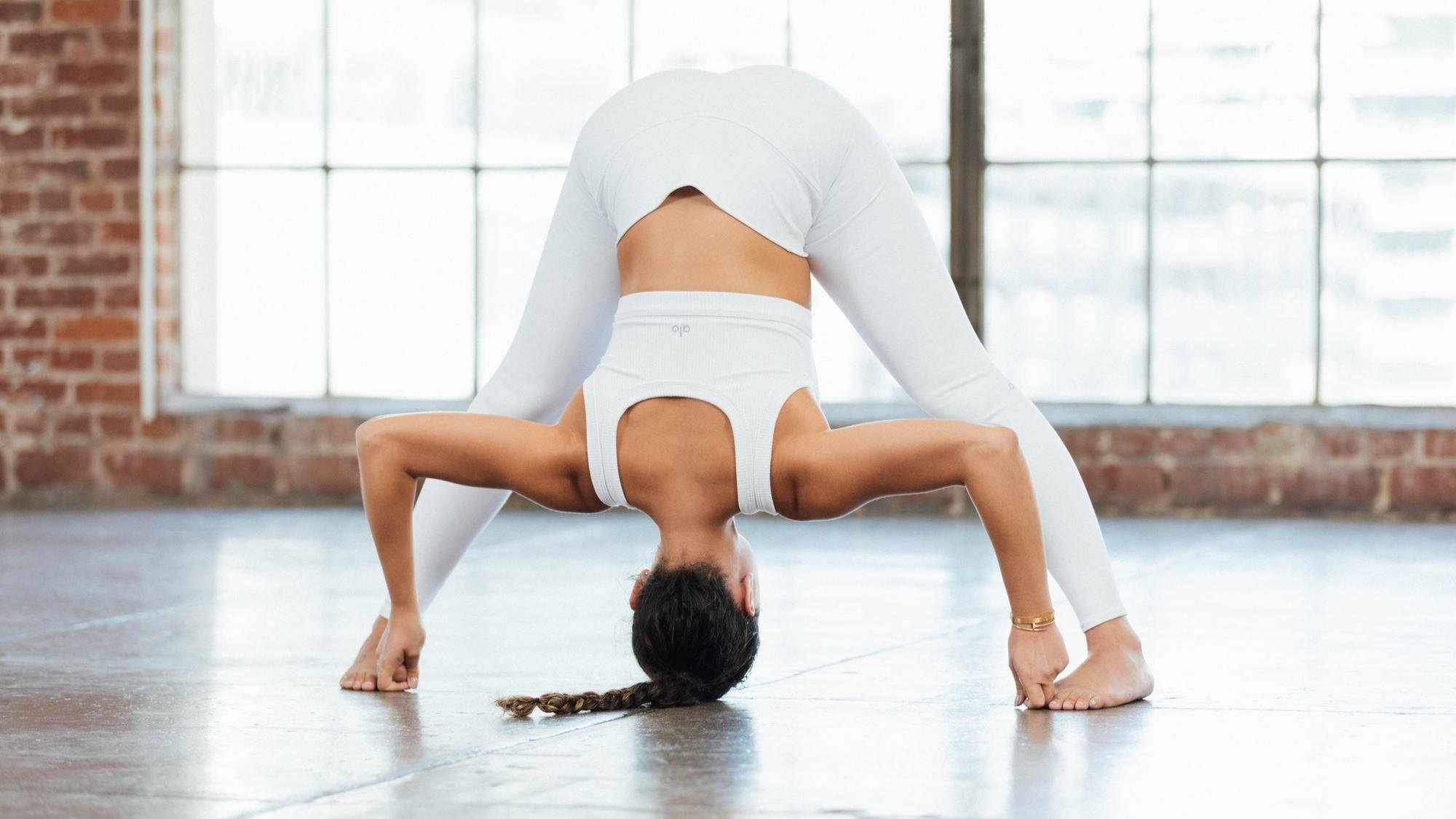Pose Breakdown: Wide-Legged Forward Fold
Free your legs and hips! Wide-Legged Forward Fold (Prasarita Padottanasana), also known as Wide-Legged Forward Bend or Standing Wide-Legged Forward Fold, is an incredibly common pose in Vinyasa Yoga sequences and part of the Ashtanga Primary Series. If you’re unfamiliar, it’s probably exactly what you’re picturing: You come into a wide stance, then fold your upper body between your legs.
This is an incredibly versatile pose: It makes a fine transition to or from most squats and lunges. It’s also a great beginner inversion! Depending on your goals, you can activate your upper body during the fold or just let your head hang and your spine unwind. With a couple of blocks, it can turn into a much lighter stretch. Some use it as an opportunity to pop up into a Headstand.
Benefits of Wide-Legged Forward Fold Pose
Relieves stress
Loosens the lower back
Opens your hips
Releases tension in your neck and shoulders
Stretches your back and inner legs, including your hamstrings
Strengthens your core
Contraindications
Avoid this pose or speak with your doctor before attempting if you have any injuries to your spine, hamstrings, or pelvic area. Start with blocks if you have any tightness in your legs or hips.
Warm-Up Poses for Wide-Legged Forward Fold Pose
Low Lunge
Pyramid Pose
How to Do Wide-Legged Forward Fold Pose
Stand on your mat with your legs wide apart and your feet close to parallel. Your stance should be significantly wider than shoulder-width, but not so wide that you start losing stability.
Externally rotate your thighs and press into the outer soles of your feet.
Hinge at your hips and bend forward with a neutral spine and an open chest.
About halfway down, when your back is close to flat, set your hands on the floor or on blocks.
If you can continue without hunching your back or feeling any pain, keep folding forward and walking your hands backward.
If your head reaches the ground comfortably, you can rest it gently on the floor.
Your hands (or forearms) can rest on the floor, or they can come to your legs or feet. If you want an upper-body stretch, try interlacing your hands behind your back.
Follow Up Poses for Wide-Legged Forward Fold Pose
Goddess Pose
Prasarita Padottanasana Meaning and Background
This pose, like many of today’s most common yoga poses, started appearing in the 1930s. It’s listed in Tirumalai Krishnamacharya’s 1934 text Yoga Makaranda and subsequently appears in the work of his students Patthabi Jois and BKS Iyengar. All three were widely influential on modern yoga — Jois through Ashtanga Yoga and Iyengar through Iyengar Yoga.
In his book and pose library Light on Yoga, Iyengar has both a translation and a pretty intuitive explanation: “Prasarita means expanded, spread, extended. Pada means a foot. The pose is one where the expanded legs are stretched intensely.”
Curious about starting a yoga practice or taking yours to the next level? Get access to thousands of online yoga classes (plus fitness and meditation!) with a free 14-day trial to Alo Moves.


